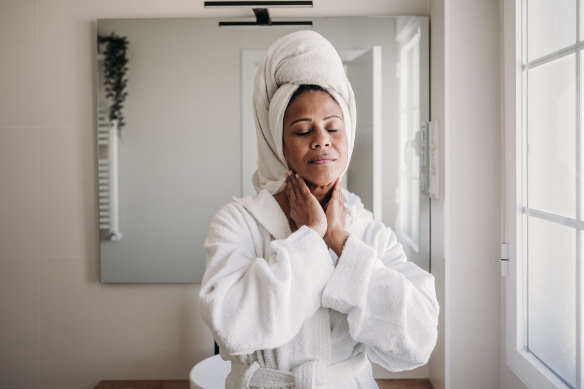
Vitamin A has been long used in skincare, but sometimes it can be confusing to work out which is the best type to use. In a nutshell, it comes in two forms – prescription medication (retin-A) or over-the-counter retinoids. Prescription formulas contain retinoic acid, an ingredient that helps fight visible signs of ageing, while non-prescription alternatives need to convert retinol into retinoic acid at the cellular level.

Retinol’s antioxidant properties also help protect skin against damage caused by exposure to the sun and ultraviolet light.Credit: Getty Images
“In off-the-shelf formulas, the ingredient called retinol is the only derivative of vitamin A worth using,” says Dr Dana Sachs, an associate professor of dermatology at the University of Michigan Medical School. “There’s a lot of literature showing that while retinol is more gentle than retinoic acid, biochemically it does the same thing – it may just take longer to see results.” It takes an average of 12 weeks for retinoic acid to create noticeable changes in skin.
Retinol is a fat-soluble molecule with antioxidant and wound-healing abilities. It helps with tissue regeneration and accelerates cell turnover, which slows down as we age, resulting in a build-up of dead skin cells in the upper layers of our skin. By boosting the turnover of cells, retinoids help stimulate the production of collagen and elastin, which address skin concerns such as fine lines, wrinkles, uneven skin tone and acne.
Then there are the derivatives, called pro-retinols (retinyl palmitate, retinyl acetate and retinyl linoleate), which are gentler but also weaker and take longer to deliver results. Try a moisturiser like SkinCeuticals Retinol 0.5 ($139).
Retinaldehyde is also a potent form of vitamin A, as it requires minimal conversion and causes very little – if any – irritation to the skin. In fact, it only requires a one-step conversion and is seen by many as the closest to retinoic acid without all the irritating side effects or need for a prescription. Try Douglas Pereira Platinum Peptide Night Serum ($320).
The myth about only using retinoids at night because they can increase your risk of sunburn has now been debunked. Retinoids do break down in sunlight, which is why the packaging of retinoid products is opaque, and they are best applied at night to make sure they’re at their most effective. However, they do not make users more likely to burn in the sun. “Clinical studies have shown pretty definitively that retinoids do not lower the MED – or minimal erythema dose – of human skin, which is the amount of UV light you can take before the skin burns,” says Dr Sachs.
Retinol’s antioxidant properties also help protect skin against damage caused by exposure to the sun and ultraviolet light.
In short, your simple skin prescription should look like this. In the morning: cleanse, apply vitamin C serum and finish using a moisturiser with SPF50+. In the evening: cleanse, apply a retinol product and finish with a slugging moisturiser.









 Add Category
Add Category